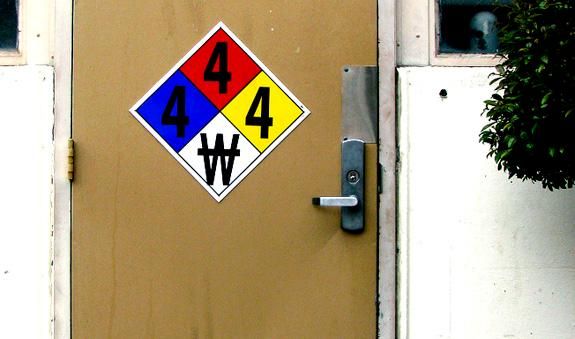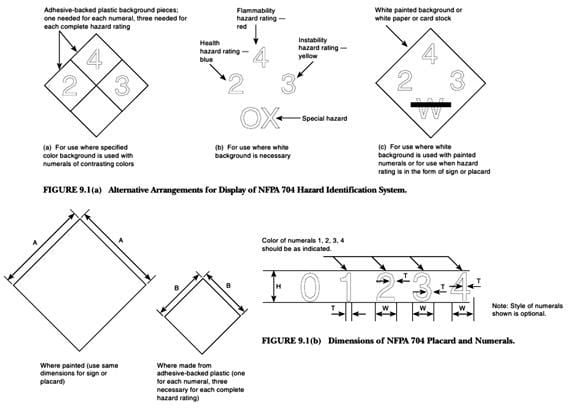Decoding the City: The Fire Diamond
Just what are those red, blue, and yellow diamonds hanging outside warehouses and factories?
/https://tf-cmsv2-smithsonianmag-media.s3.amazonaws.com/filer/20130410074034nfpa-704-470.jpg)
Cities are full of signs. Signs telling us where to go and how to get there; signs suggesting things to buy and signs keeping us from where we shouldn’t be. Every sign is a code of sorts, a graphic system linked to something else – an idea, an instruction, a building. Typically, these codes are carefully designed to be decipherable by as many people as possible – everyone, ideally. They reduce meaning to its most essential components: RED=STOP. But occasionally in cities, there are signs that aren’t intended to be read by everyone, coded messages for specific agencies or civil service employees. These signs are ubiquitous but largely indecipherable and mostly go unnoticed. One such sign is NFPA 704 – perhaps better known as the “fire diamond.”

NFPA 704 is the American system for identifying hazardous materials created by the National Fire Protection Association. It was first developed in 1957 by the NFPA’s Sectional Committee on Classification, Labeling, and Properties of Flammable Liquids “to safeguard the lives of those individuals who may be concerned with fires occurring in an industrial plant or storage location where the fire hazards of materials may not be readily apparent.” In 1961, the NFPA formally adopted the primary-colored diamond design as a National standard, providing emergency workers with a simple, readily recognized and decipherable system of signage describing general hazards to help workers in planning a safe and effective response.
These signs are found on chemical tanks, warehouse doors, and loading docks all over the country – any industrial, commercial, or institutional building that manufactures, processes, uses, or stores hazardous materials that “would cause, or significantly contribute to an increased risk of serious injury, incapacitating illness or increased risk of death.” They are exclusively used on structures or containers; signage for vehicles carrying hazardous materials is regulated by the Department of Transportation. Although the National Fire Protection Agency standard describes the relative sizes of the diamonds and the numbers, including the suggestion that diamonds used on building exteriors measure no less than 15 inches by 15 inches, local authorities have final jurisdiction over how the signs are implemented, including their location and size.
The basic form is familiar to anyone who’s every had some sidewalk chalk and a ball. A diamond divided into four smaller diamonds, each given a color code and number to signify a specific hazard: the blue diamond is the health signal, ranked according to the level of toxicity and effects of exposure to response personnel; the red signifies the level of flammability, and the yellow indicates reactivity. The white diamond is reserved for any other necessary information, such as water reactivity, radioactivity, the need for protective equipment, or specialized extinguishing agents. The number within each diamonds indicates the severity of the threat, ranging from 0, indicating no hazard or unstable materials, to 4, which indicates highly combustible, toxic, or reactive materials that could cause death or major injury.
With the exception of the poison and radiation symbols, NFPA 704 is almost completely opaque to the average person and just fades into the background of visual white noise produced by the modern American built environment. But to those for whom they’re intended, the signs provide invaluable, and potentially life-saving information. Other countries have their own unique standards, such as the orange hazard symbols required on all European vehicles carrying dangerous materials. Have you observed similar signs oversees? Are you curious about other signs and symbols? Let us know in the comments!


/https://tf-cmsv2-smithsonianmag-media.s3.amazonaws.com/accounts/headshot/Jimmy-Stamp-240.jpg)


/https://tf-cmsv2-smithsonianmag-media.s3.amazonaws.com/accounts/headshot/Jimmy-Stamp-240.jpg)